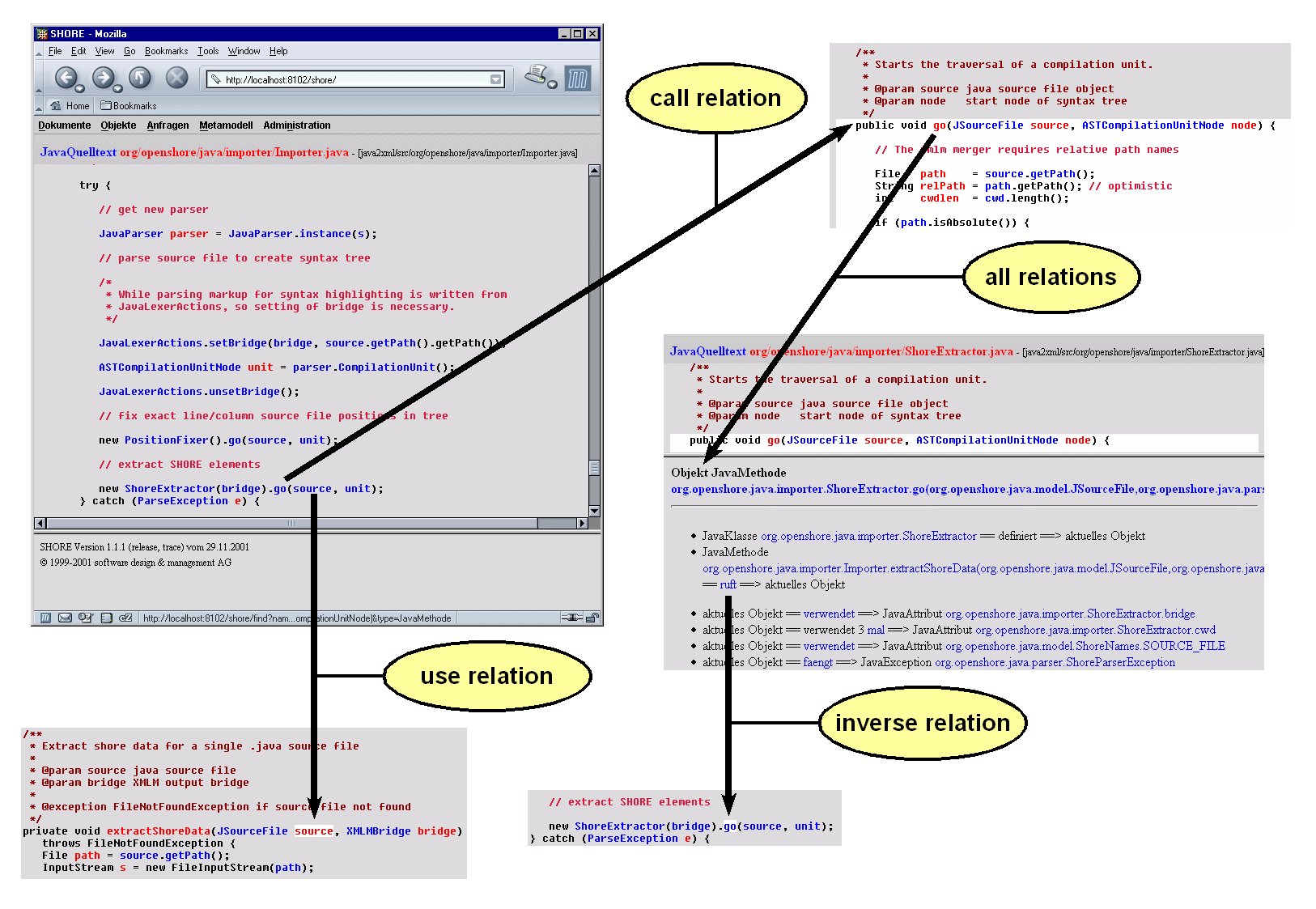
Some basic hypertext navigation in Java source code from the SHORE Java parser. All bright blue and red colored names are hyperlinks. They are resolved dynamically by the SHORE server with database queries.
Blue links follows relations. Red links (SHORE objects) shows up all incoming and outgoing relations of these objects inside the bottom frame.









